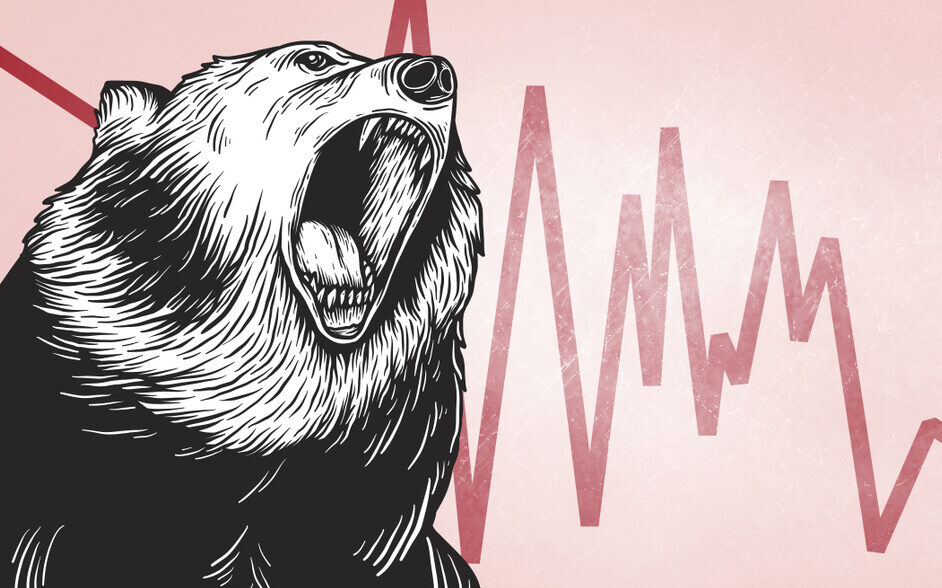Doubleline Capitol CEO Jeffery Gundlach sat down for a recent interview on CNBC in which he said we are already in a bear market, and it’s likely going to go below the lows of last February’s correction.
“People like this definition of 20 percent down is a bear market, but that’s obviously very arbitrary.”
The S&P 500 is down 11 percent from its record high in September and Wall Street typically defines a bear market as a 20 percent or more drop.
The S&P 500 dipped to 2,532 in February, about 2 percent below its current point.
The host mentioned we are still about 50 points above February’s lows on the S&P 500 and said, “You think we’re going to go below that?”
Gundlach’s comments are below in full with some slight editing for length purposes.
Well, in the fullness of time, absolutely we’ll go below that. I’m pretty sure this is a bear market. I mean, people like this definition of 20 percent down is a bear market, but that’s obviously very arbitrary. I’ve been around for over 35 years in this business and I’ve seen a number of bear markets. It’s more about how you lead into it, how it develops, how the sentiment changes. And I think we’ve pretty much had all of the variables that characterize a bear market.
Usually something happens that doesn’t make any sense at all. I’m kind of amazed at how it goes on longer than it should, like back in the dot-com days when companies were being IPO’d that had no sales let alone any revenue — which is hard to believe, and they’d actually explode on the upside on the IPO, and that’s kind of crazy.
And then we had sub-prime lending with pick-a-pay loans back in ’05 and ’06, and that was kind of crazy and went on longer than it should have.
Like we talked about a year ago, it was crypto, Bitcoin, which was truly a mania. Maybe, in the end, … the blockchain technology is a good thing. But the way it was being treated and believed in was a mania, and then it crashed.
And then one after another, you started to see various sectors of the global financial markets give it up. The global stock markets peaked January 26, and so did the New York Stock Exchange on January 26. But the Dow Jones Industrial, the Nasdaq, the S&P 500, all these things, one by one, started to roll. Then come later in the summertime you were down to the FAANGs, and then you were down to two stocks, Amazon and Apple. And then Amazon gave it up and then finally, when they decided they weren’t going to tell you how many phones they had sold anymore, Apple gave it up.
On Oct. 3, the USMCA (trade agreement), it was announced that we would have this change in NAFTA that would lead to a requirement that a certain fraction of car parts be made in higher-cost locales, which basically means not Mexico. A senior executive at Ford Motor said, ‘Well, obviously, we’re going to have to raise the prices on our cars if the input prices are going up.’ And suddenly the markets seemed to wake up to the fact that this was real and the next day, the stock market tipped over. In fact, on October 3, Jay Powell (Fed Chair Jerome Powell) said ‘We’re a long way from neutral.’ And that was a big problem, too. That, with the USMCA thing and the Ford Motor executive, those things seemed to come together and coalesce to, ‘We’ve had enough.’
The Jay Powell thing was really interpreted by the market as a scary thing, that the Fed was really going to keep going a long distance further. And then the market dropped over 10 percent and, suddenly, the Fed had to massage the rhetoric. Suddenly it was, ‘Well, we have a new definition of neutral maybe. We’re actually within the lower bound or close to the lower bound of neutral,’ in an attempt to stabilize the market.
It seems like a bear market to me in the way that things trade, late-day volume being bad. The best thing for the near-term, I think, is that the most export-sensitive stock, South Korea, the KOSPI, bottomed on October 29.
Maybe this leg down is getting toward an exhaustion point. The sentiment is pretty dark right now. I’d be happier on the short-term outlook if the VIX (volatility index) would go above 40.
“The VIX going above 40 would be quite a spike,” the host said.
“That’s typically what happens when you get at a bottom. There’s so much nervousness and fear. But the VIX is disturbing how it doesn’t go higher as the market pushes to the downside. But I think this is a bear market and I think we’re going to go below the February lows almost with certainty.
Click here to see the interview in full.
